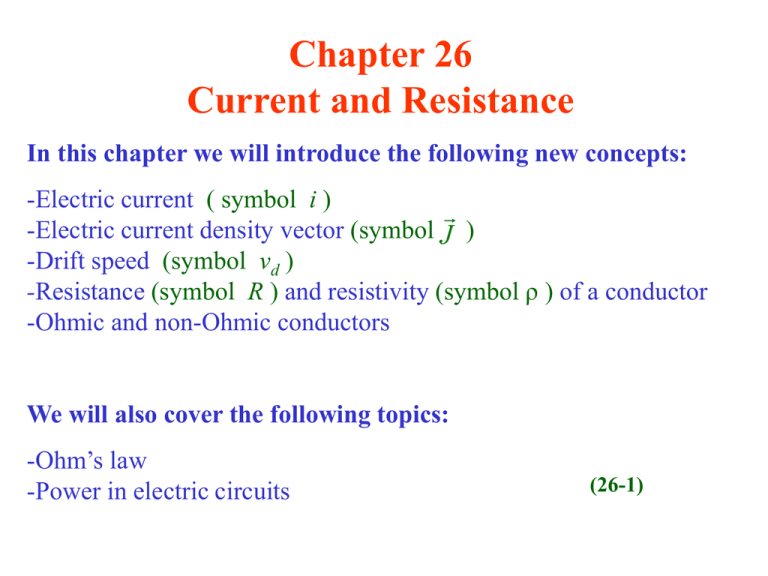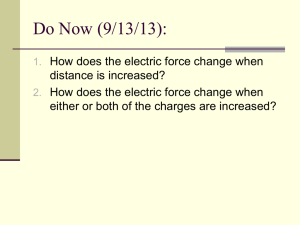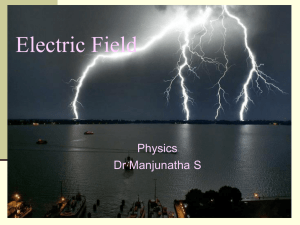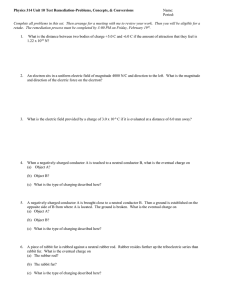Chapter 26 Current and Resistance J
advertisement

Chapter 26 Current and Resistance In this chapter we will introduce the following new concepts: -Electric current ( symbol i ) -Electric current density vector (symbol J ) -Drift speed (symbol vd ) -Resistance (symbol R ) and resistivity (symbol ρ ) of a conductor -Ohmic and non-Ohmic conductors We will also cover the following topics: -Ohm’s law -Power in electric circuits (26-1) dq i dt Consider the conductor shown in the figure. It is connected to a battery (not shown) and thus charges move through the conductor. Consider one of the cross sections through the conductor ( aa or bb or cc ). dq The electric current i is defined as i . dt Current = rate at which charge flows Current SI Unit: C/s, known as the "ampere" conductor v +q i conductor v -q i Current Direction An electric current is represented by an arrow, which has the same direction as the charge velocity. The sense of the current arrow is defined as follows: 1. If the current is due to the motion of positive charges, the current arrow is parallel to the charge velocity v . 2. If the current is due to the motion of negative charges, the current arrow is antiparallel to the charge velocity v . (26-3) conductor v A +q i J conductor v A -q i i J A J Current Density Current density is a vector that is defined as follows: i Its magnitude is J SI unit for J : A / m2 A The direction of J is the same as that of the current. The current through a conductor of cross-sectional area A is given by the equation i JA if the current density is constant. If J is not constant, then i J dA. We note that even though the current density is a vector the electric current is not. This is illustrated in the figure to the left. An incoming current i0 branches at point a into two currents, i1 and i2 . Current i0 i1 i2 . This equation expresses the conservation of charge at point a. Please note that we have not used vector addition. (26-4)




